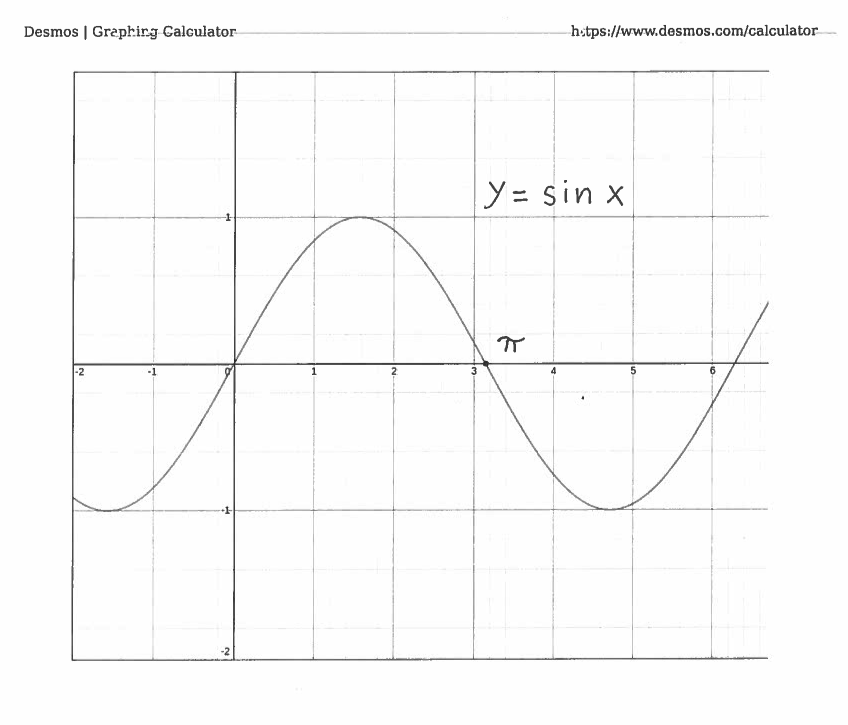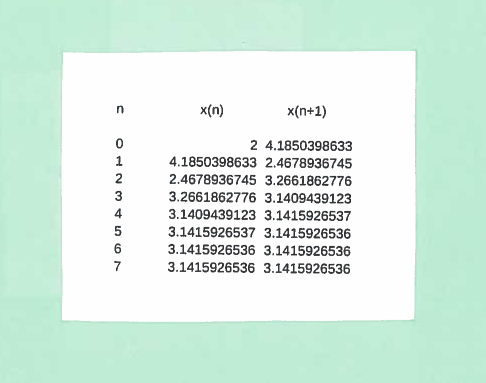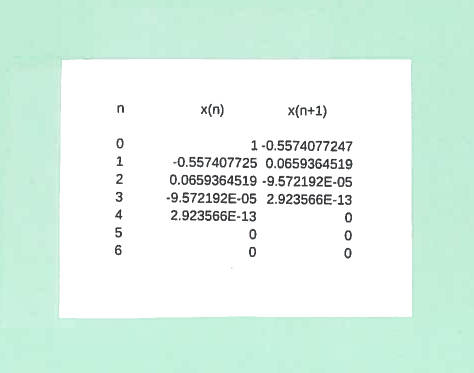SOLUTION 4: We know from trigonometry that $ \ \sin \pi = 0 $, so I will choose to solve the equation $ \ \sin x = 0 \ $ for $x$. Let's define function $ f(x) = \sin x $, whose graph is given below.

The derivative of $f$ is $ f'(x) = \cos x$. Now use Newton's Method:
$$ x_{n+1} = x_{n} - { f(x_{n}) \over f'(x_{n}) } \ \ \ \ \longrightarrow $$
$$ x_{n+1} = x_{n} - { \sin x_{n} \over \cos x_{n} } \ \ \ \ \longrightarrow $$
$$ x_{n+1} = x_{n} - { \tan x_{n} } $$
I will choose to let $ x_{0}=2 $. Using Newton's Method formula for 7 iterations in a spreadsheet results in :

Thus $ \ \pi \ $ to ten decimal places is $ \ \pi \approx 3.1415926536 $.
IMPORTANT NOTE: Choosing a different initial guess can lead to other solutions to the equation $ \ \sin x = 0 \ $. For example, if I choose to let $ x_{0}= 1 $, then Newton's Method leads to the solution $ \ x=0 \ $. Using Newton's Method formula for iterations in a spreadsheet results in :

Click HERE to return to the list of problems.



